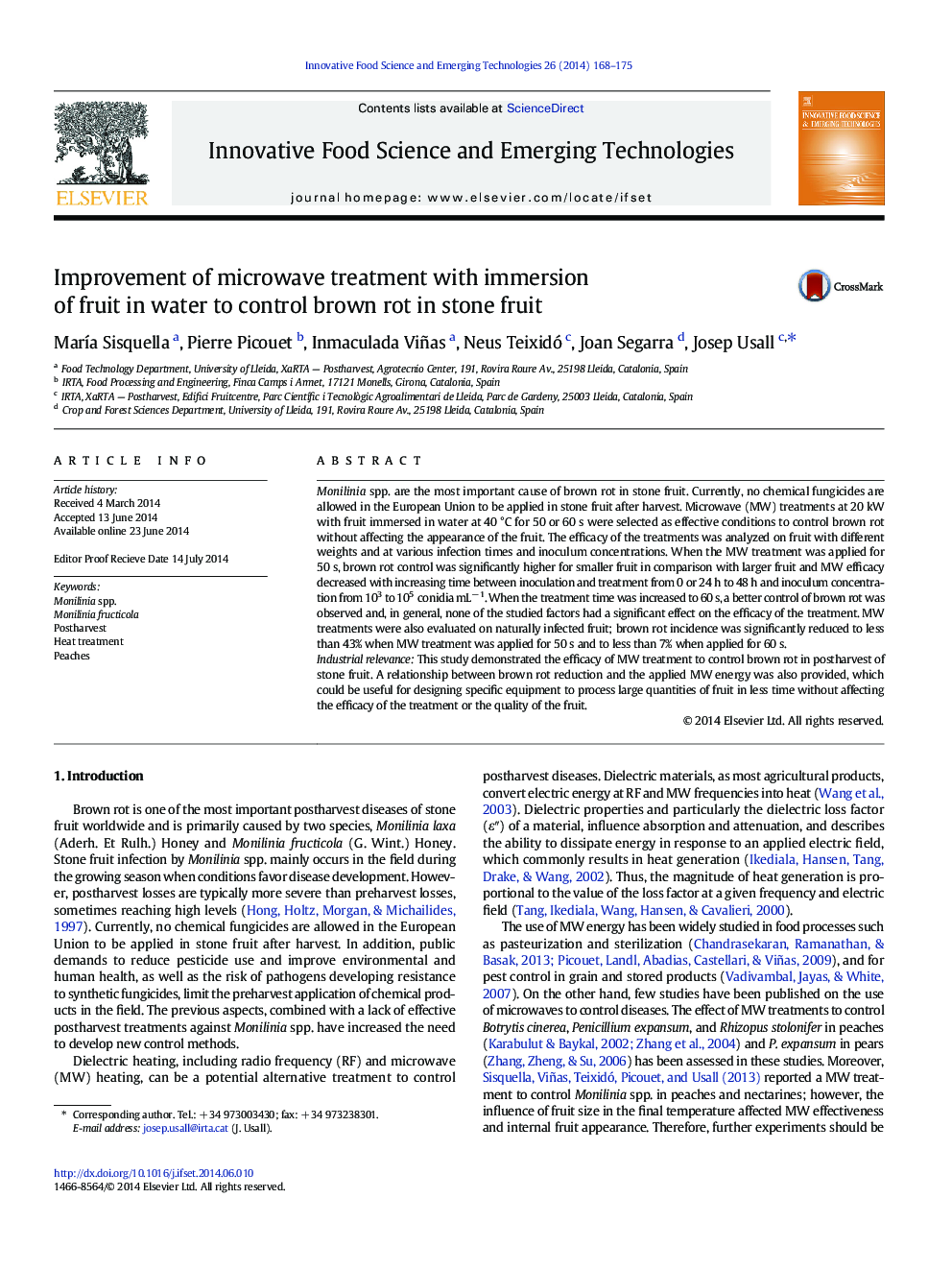| Article ID | Journal | Published Year | Pages | File Type |
|---|---|---|---|---|
| 2086666 | Innovative Food Science & Emerging Technologies | 2014 | 8 Pages |
•Microwave (MW) treatments with fruit immersed in water were studied to control brown rot.•MW treatment at 20 kW in fruit immersed in water at 40 °C for 60 s was selected.•MW efficacy was not affected by fruit size, infection time and inoculum concentration.•Brown rot incidence was reduced to less than 7% in naturally infected fruit.•Internal and external appearance and fruit quality were not negatively affected.
Monilinia spp. are the most important cause of brown rot in stone fruit. Currently, no chemical fungicides are allowed in the European Union to be applied in stone fruit after harvest. Microwave (MW) treatments at 20 kW with fruit immersed in water at 40 °C for 50 or 60 s were selected as effective conditions to control brown rot without affecting the appearance of the fruit. The efficacy of the treatments was analyzed on fruit with different weights and at various infection times and inoculum concentrations. When the MW treatment was applied for 50 s, brown rot control was significantly higher for smaller fruit in comparison with larger fruit and MW efficacy decreased with increasing time between inoculation and treatment from 0 or 24 h to 48 h and inoculum concentration from 103 to 105 conidia mL− 1. When the treatment time was increased to 60 s, a better control of brown rot was observed and, in general, none of the studied factors had a significant effect on the efficacy of the treatment. MW treatments were also evaluated on naturally infected fruit; brown rot incidence was significantly reduced to less than 43% when MW treatment was applied for 50 s and to less than 7% when applied for 60 s.Industrial relevanceThis study demonstrated the efficacy of MW treatment to control brown rot in postharvest of stone fruit. A relationship between brown rot reduction and the applied MW energy was also provided, which could be useful for designing specific equipment to process large quantities of fruit in less time without affecting the efficacy of the treatment or the quality of the fruit.
